Attractions
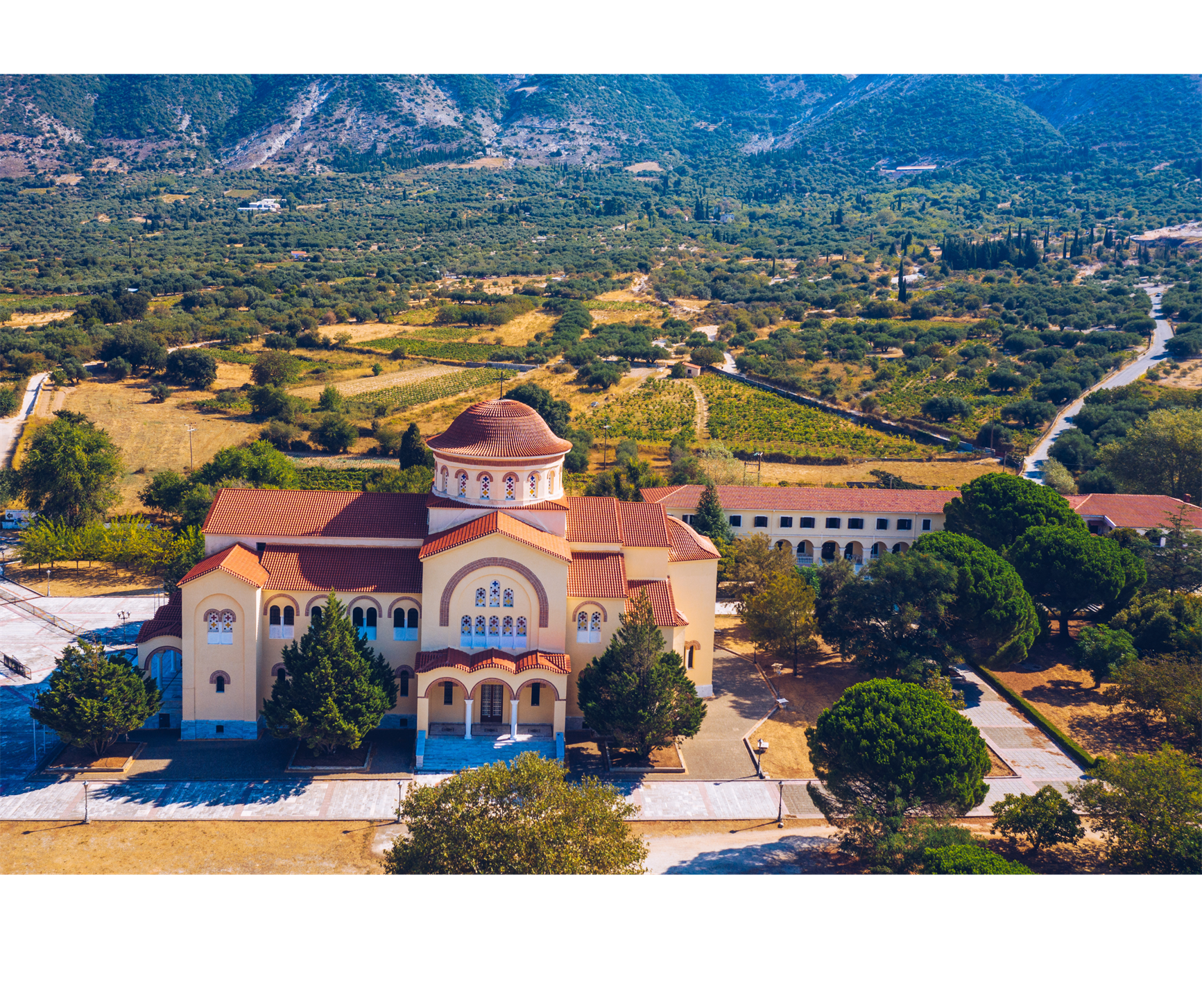
Monastery of the Patron Saint of Kefalonia Agios Gerasimos.
It was founded in 1560 by Saint Gerasimos himself, who shortly after his death, was declared patron saint of Kefalonia. The Monastery of Agios Gerasimos in Kefalonia can be easily reached from Argostoli or Sami. The relics of the Saint are dressed in burial vestments and are placed in a silver reliquary above his tomb.
You can also visit the hermitage of Agios Gerasimos in Kefalonia, as its entrance is inside the church. In the premises of the monastery, the three large plane trees planted by the Saint himself, as well as the three wells he opened with his own hands, according to tradition, are still preserved.
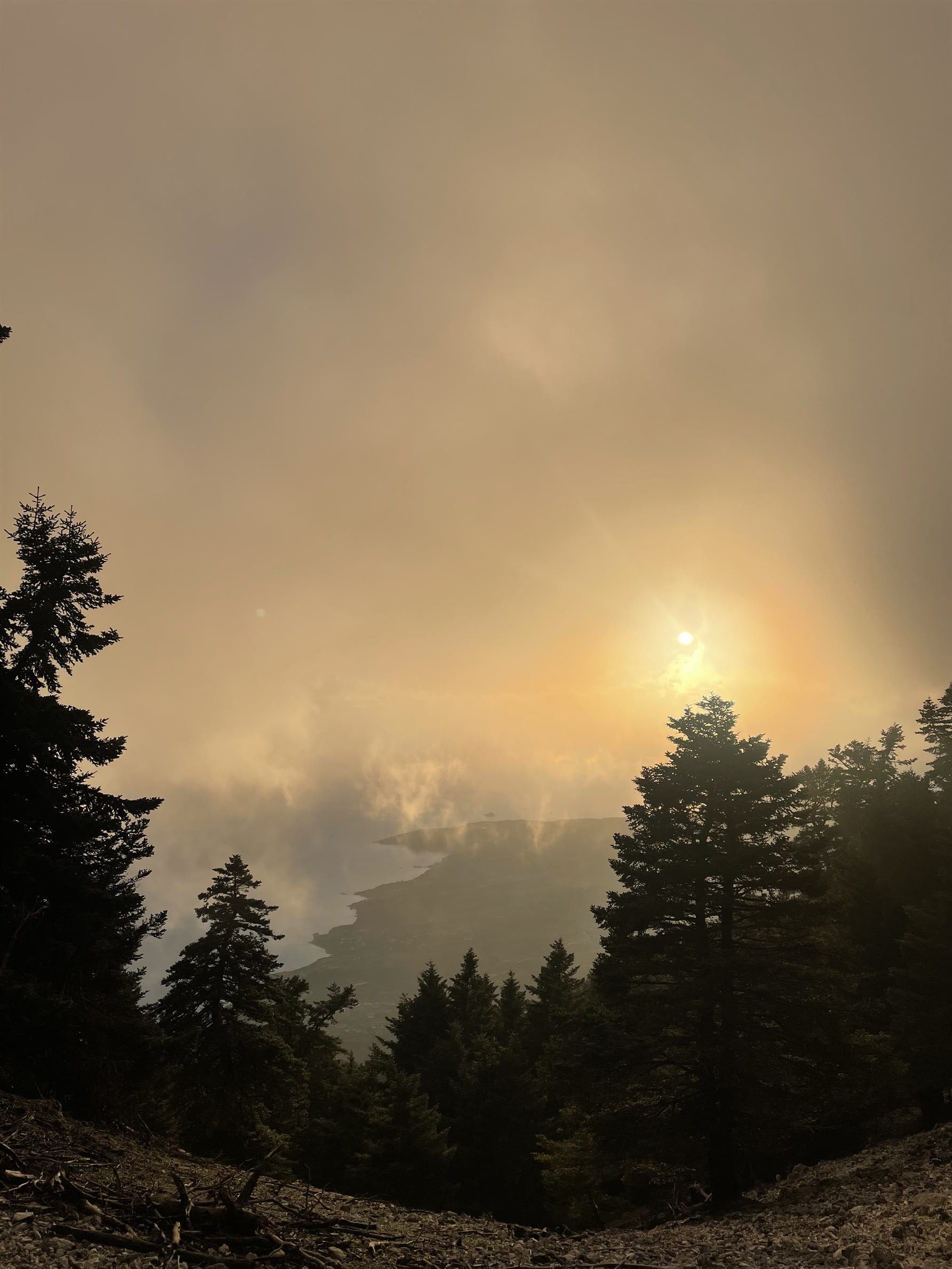
Ainos
In Ainos, the mythical mountain of 1628 m. with the forest of Kefalonian fir (Abiescephalonica) there was an altar dedicated to Zeus. Of all the islands of the Mediterranean, only Kefalonia and Evia have fir forest.
Ainos is the highest mountain not only of Kefalonia, but of all the Ionian Islands: its highest peak, Megalos Soros, reaches 1,628 meters high. It extends in the eastern part of the island and is mostly covered by fir trees.
Today you can drive to the boundaries of the National Park and then continue on foot on the paths of Ainos, on routes through nature and greenery, admiring not only the unique fir trees, but about 400 species of plants!
If you are lucky, you will also meet the famous wild horses of Kefalonia: a small group of relatively small horses, Equus caballus, living freely in Ainos, in a semi-wild state!
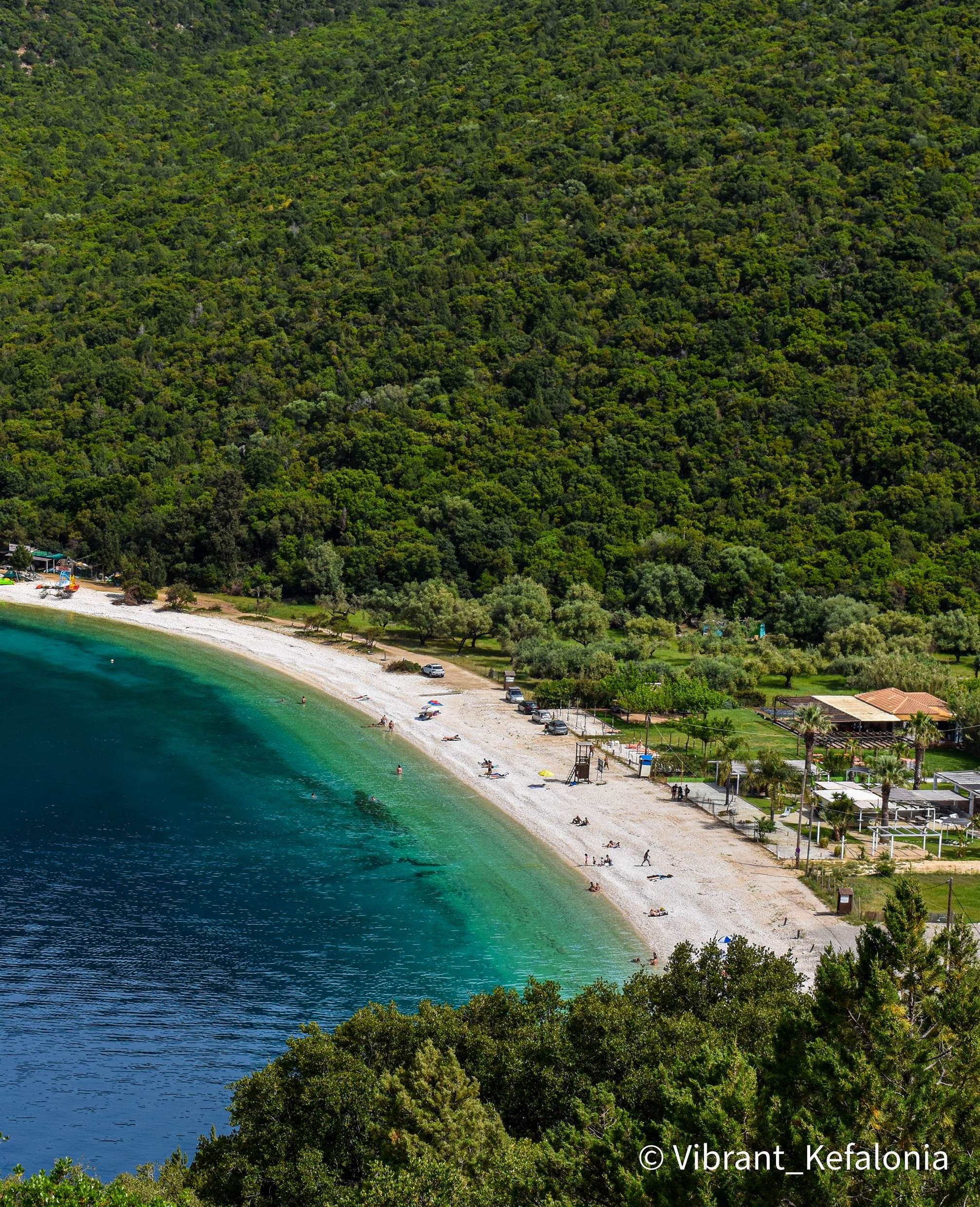
Antisamos
Antisamos beach is undoubtedly one of the most favourable destinations for swimming and sunbathing in Kefalonia.
It is located 30.6 km east of Argostoli and close enough to the port of Sami. Antisamos stands out for its natural beauty, which consists of turquoise waters and a wonderful environment of green hills and lush vegetation at its top.
It is this amazing landscape that characterizes this area and captivates all visitors. Such a beach could not but be well organized with umbrellas and sunbeds. Two beach bars serve guests, while water sports facilities are also part of the beach.
Behind the hill, there is a great spot for bathers and nature lovers. Apart from the beach which is considered a beautiful attraction, the magnificent monastery of Agrillion is located at the top of the hill. Antisamos has gained worldwide fame from the Hollywood film Captain Corelli’s Mandolin, where some of the scenes were filmed there.
The beach is easily accessible from the coastal road of Sami.
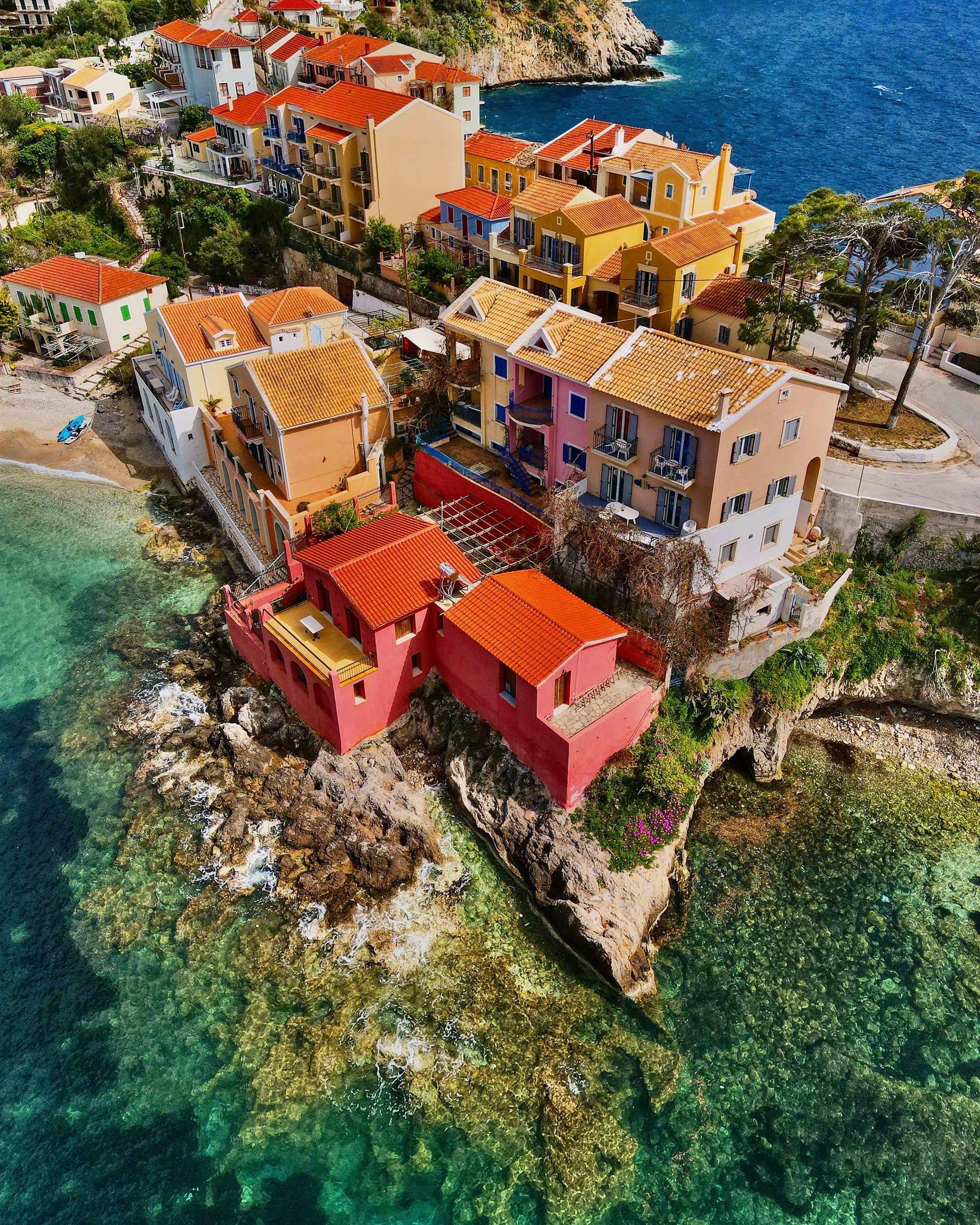
Assos
About 36 kilometres north of Argostoli, the capital of Kefalonia, lies the small, picturesque village of Assos, a hidden, artistically beautiful place that will offer you a very relaxing experience and is worth visiting! This small village is a must-see due to its harmonious mix of graphic elements. It is located on the hill of the small peninsula of Erisos. Although its size is small and its population does not exceed 100 in number, it is a place of great historical importance due to its strategic location.
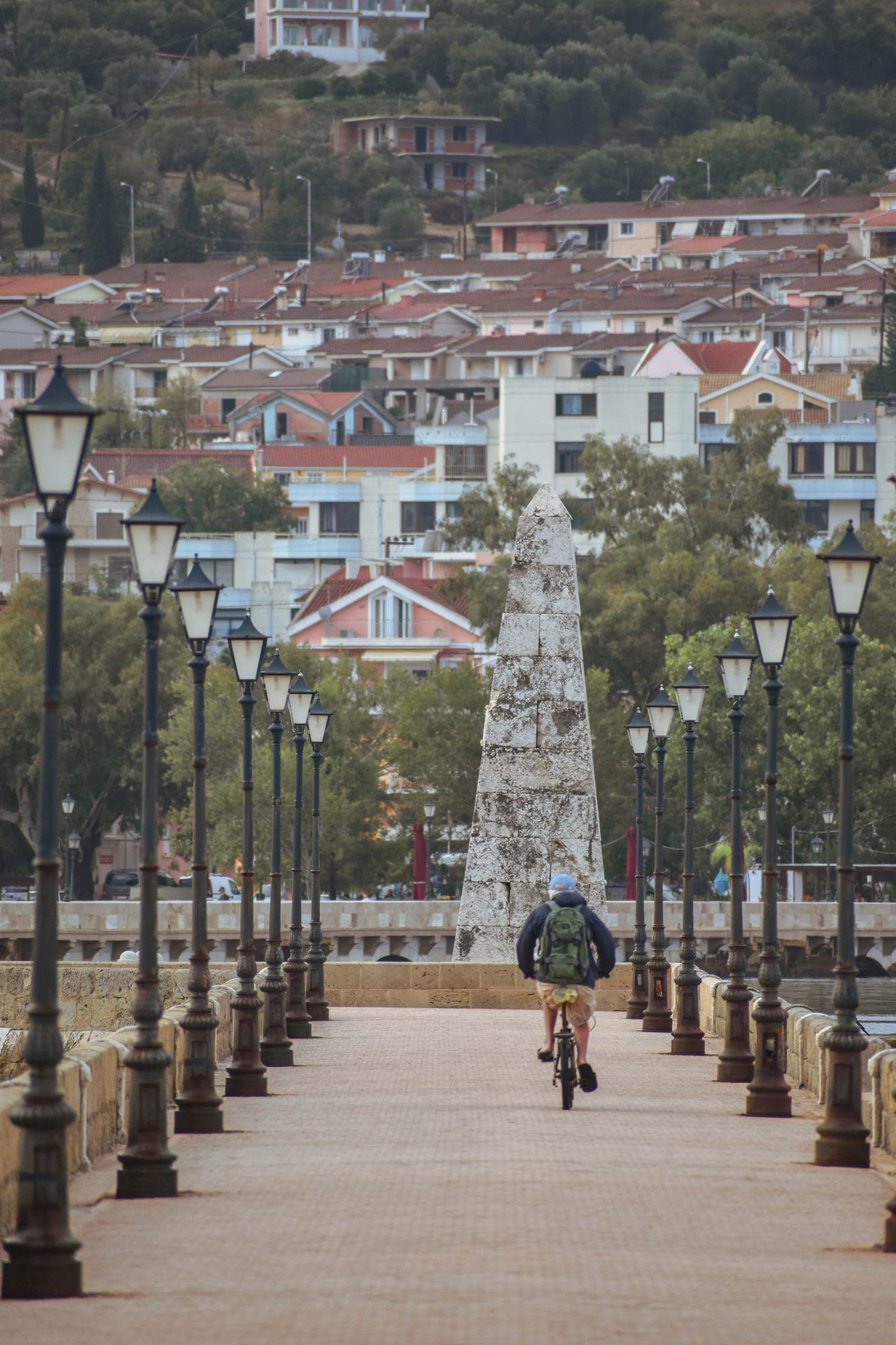
De Bosset Bridge
The bridge, known as De Bosset, was designed and built by Charles Philip De Bosset in 1812. After the 1953 earthquake, the bridge has been restored and is now a great place for public events during the summer.
The De Bosset Bridge is the largest stone bridge in seawater and has existed since 1813, when the Swiss engineer Charles Philippe De Bosset worked for the British Army Thanks to his contribution to the design and construction of the bridge, Monsieur de Bossett was appointed governor of Cephalonia from 1810-1814 by the British who ruled the Ionian Islands from 1809-1864. The city of Argostoli, with the narrow Fanari Peninsula protruding from Argostoli, was the central center for all commercial and commercial activities for the inhabitants of the island. However, the entrance was separated from Argostoli by mainland Cephalonia, making the route around the 5km perimeter mandatory. part of it, building a wooden bridge on the south side of the port of Argostoli in Drapano, a small village 950 meters above the water. The transportation problems of the villagers who had been resolved, reduced their fears for possible intrusions and the De-Bosset bridge was completed in two weeks. The small strength of the bridge required its remodeling in 1842. Baron Everton gave the bridge a new look and was rebuilt with stone using materials from Metela Hill. As you cross the bridge upon arrival in its capital of the island, a four-sided symmetrical obelisk consisting of carved rocks rises from the sea. This monument, called the “Column”, which has existed since 1813, was the symbol of gratitude of the Parliament of Cephalonia in Great Britain. The catastrophic earthquake of 1953 injured one third of the bridge on the Argostoli side. The bridge and the obelisk survived the quake, but like the rest of the city, it needed major repairs using modern concrete methods. Several arches were added to the side of the Argostoli bridge to add extra strength to the bridge. Today the De Bosset Bridge was gradually repaired to become the center of Argostoli’s cultural events in the future.
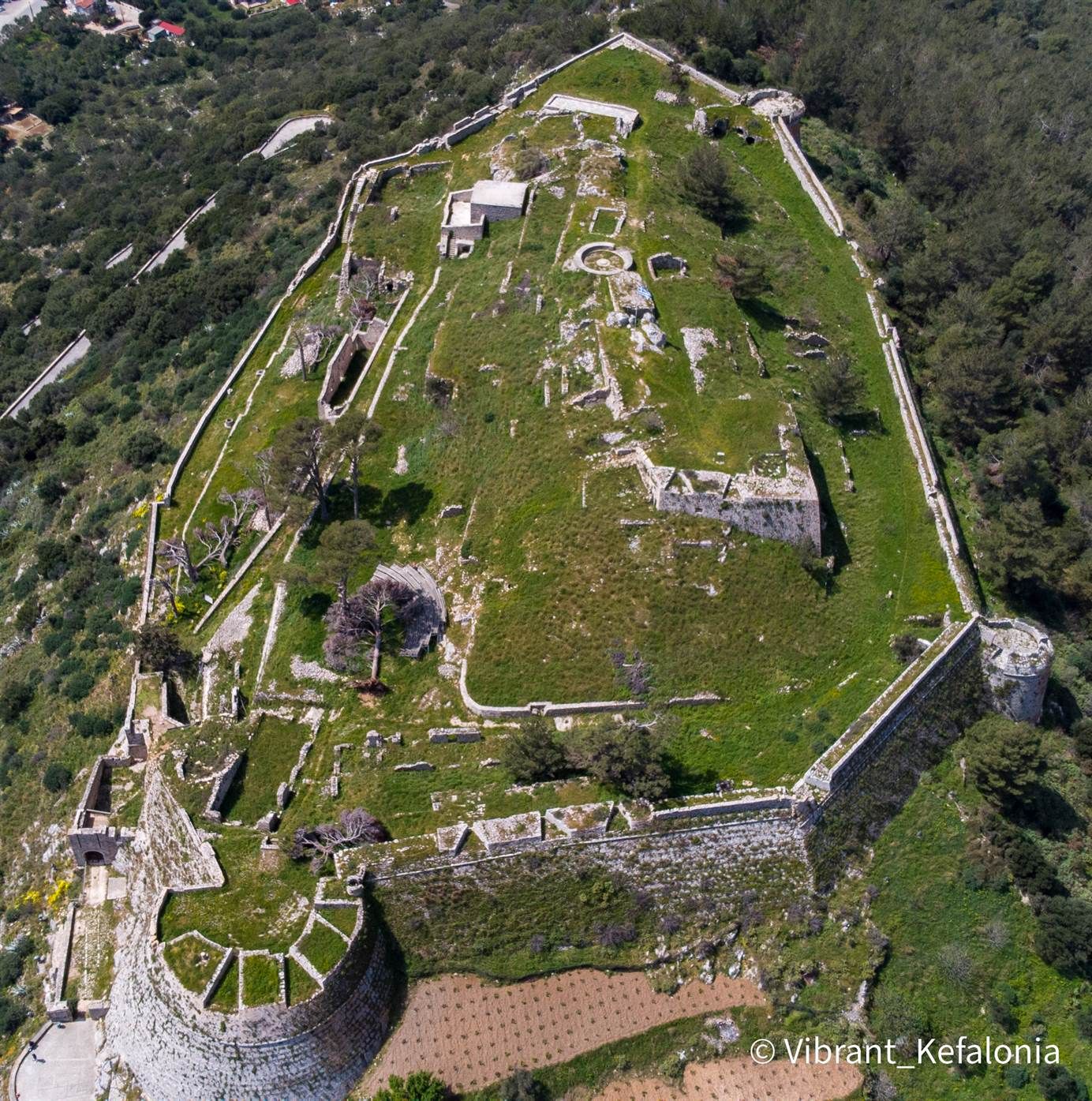
Castle of Agios Georgios
A 320-meter-high peak towering over the villages of Travliata and Peratata, the Venetian Castle of Agios Georgios is deeply connected to the history of Kefalonia!
Displaying a polygonal shape and covering an area of approximately 16,000 square meters, the castle dates back to the 12th century during the Byzantine era before falling into the hands of the Turks and eventually flourishing in what is now under Venetian rule in the early 16th century.
After its full completion, this fortress was the capital of Kefalonia until 1757. However, two earthquakes in the 17th century, as well as the devastating earthquake of 1953, left the Castle of Agios Georgios heavily damaged, with its fortifications having suffered much damage.
The site has a small fee to enter and explore the ruins, where you will also find various coats of arms from Venetian families! Guests will enjoy fantastic views of the castle upon Argostoli and the neighbouring villages, although it is also a great opportunity to visit the ruins of the medieval church of Evangelistria and the church of Agios Theodoros!
Otherwise, you can relax in one of the nearby cafes and restaurants.
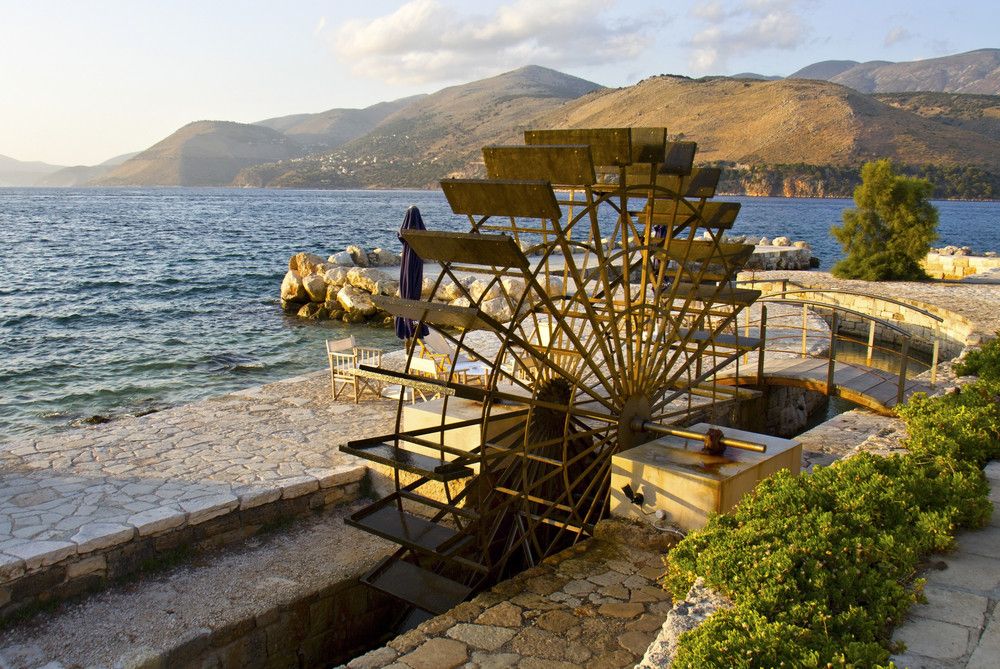
Sinkholes (Katavothres)
And something that doesn’t exist anywhere else in the world: the Sinkholes (Katavothres) near Argostoli (eastern Kefalonia). There the sea flows towards the land and disappears into dark chasms in the bowels of the island. The sea water, following underground labyrinthine routes through the limestone rocks, flows into the lake of Karavomylos in western Kefalonia.
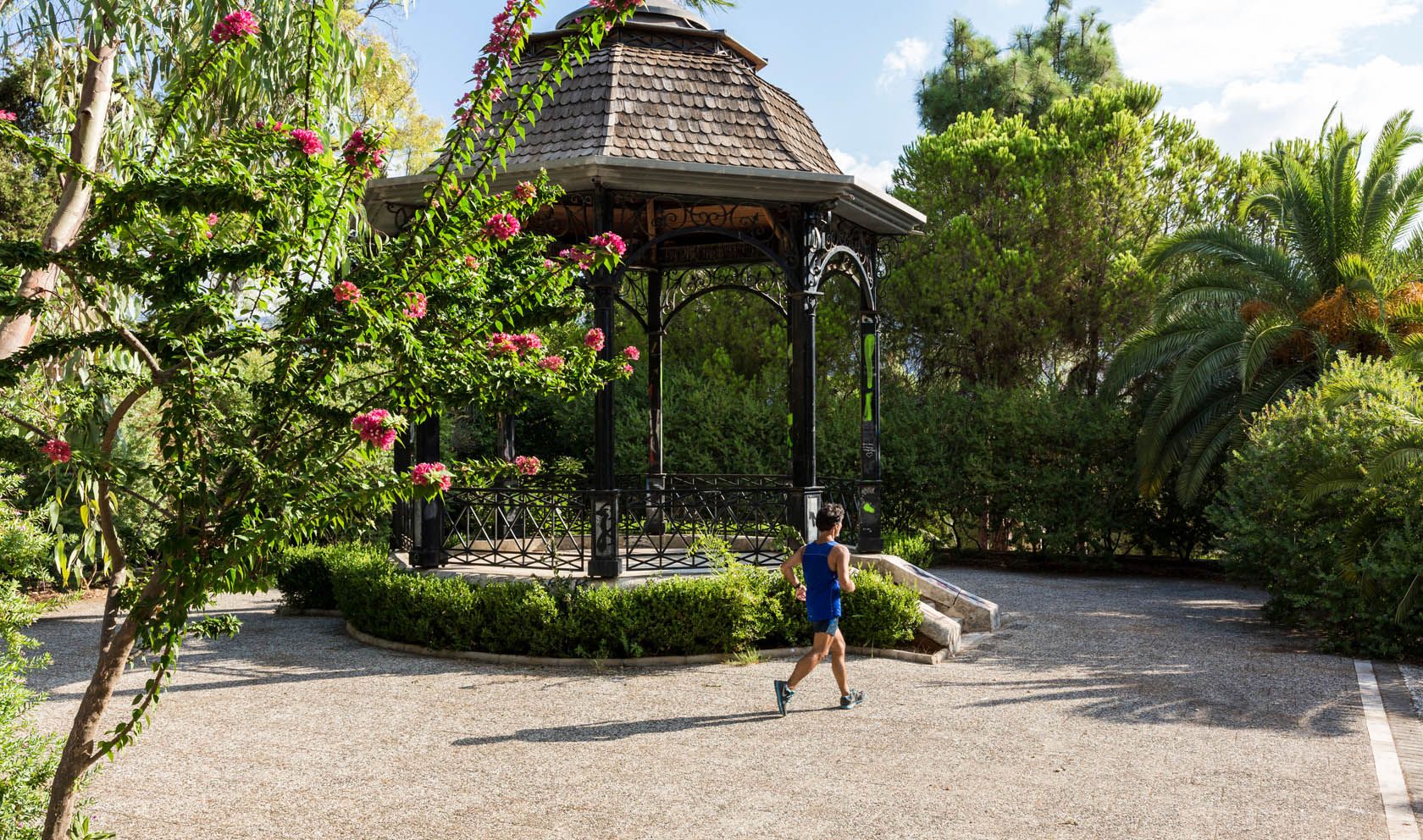
Napier’s Garden
Just five minutes from Vallianos Square, Napier’s garden is a retreat in the heart of Argostoli. It was named after Charles James Napier, who served as governor of Kefalonia from 1822 to 1830 under the British rule and was a staunch supporter of the Greek people. Napier originally created and built the park for the amusement of his children.
If you’re looking for a place to relax and unwind, visit Napier’s Garden for a stroll through cobbled paths on a wonderful route. In the Garden there is a monument, designed by the Kefalonian artist G. Bonanos and dedicated to the victims of the war 1912-1922.
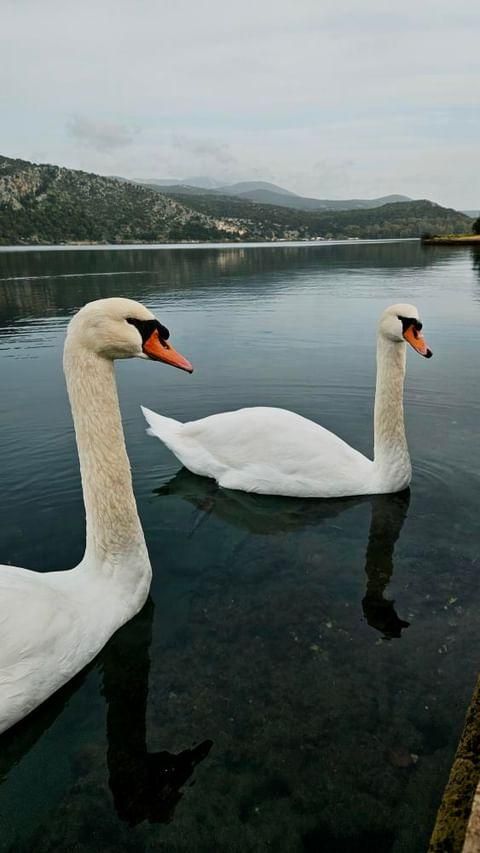
Koutavos Lagoon
The large lagoon that extends northeast of Argostoli is known as Koutavos or lagoon of Argostoli. The stone-built De Bosset bridge borders the lagoon of Koutavos, which is so shallow that it does not exceed two meters.
It is a refuge for various species of birds and fish, while the famous caretta caretta sea turtles swim in the lagoon during mating.
The lagoon took its name from the ancient word “kottavos” which means bowl. It is a very shallow bay, suitable only for small boats, formerly swampy and impassable, full of mosquitoes that carried many diseases and infections.
Since the construction of the bridge in 1813, the lagoon of Koutavos has changed its image and is one of the most popular attractions of Kefalonia, where tourists can walk admiring nature.
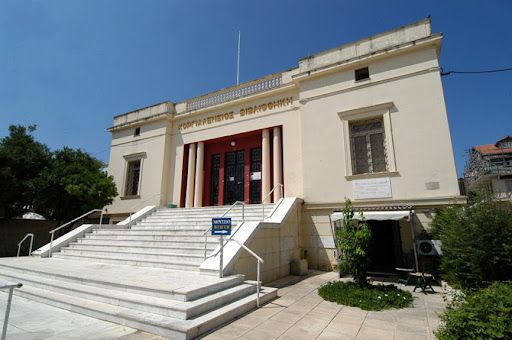
Folklore Museum of Argostoli
Objects of everyday life of Kefalonians, furniture, tools, appliances, works of art, ecclesiastical objects and historical documents that are relics are hosted in the halls of the Korgialenios Historical and Folklore Museum, in Argostoli. It was created in 1963 on the ground floor of the Korgialenios Library and covers the entire modern history of Kefalonia: from the Venetian conquest to the destruction by earthquakes in 1953.
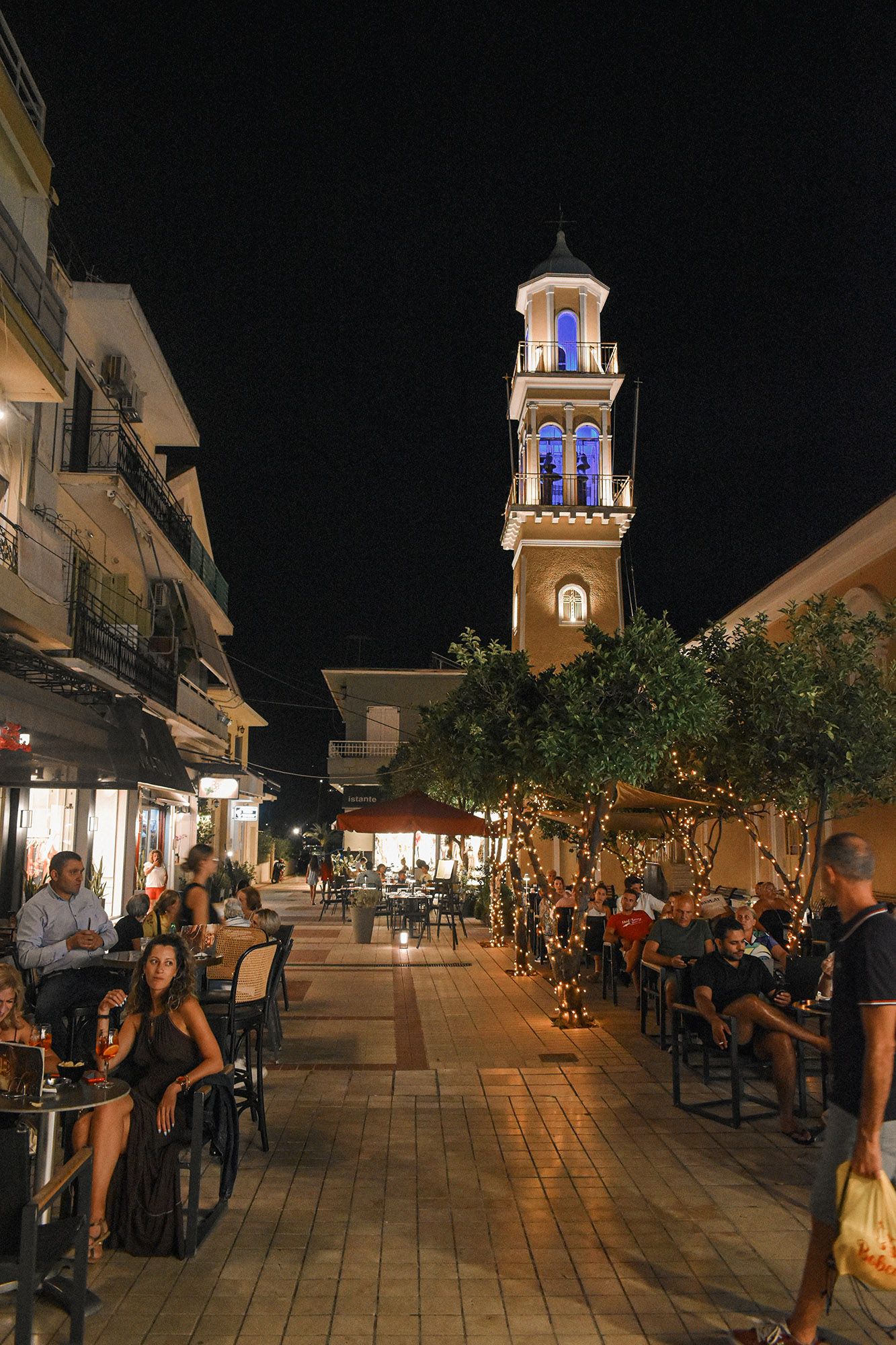
Lithostroto
If you visit Kefalonia, you can’t help but walk on Lithostroto. It is the liveliest street of Argostoli and is full of life and people all year round.
It is a really charming pedestrian street, a picturesque setting for your morning and evening walks. Starting from Kampana Square, Lithostroto reaches almost to Vallianos Square.
Here parade a variety of shops, cafes and restaurants for every taste.
The famous church of Agios Spyridon is located along the shopping street.
The heart of Kefalonia beats in Lithostroto, with many of the traditional customs such as serenades, religious events and local traditions taking place here.
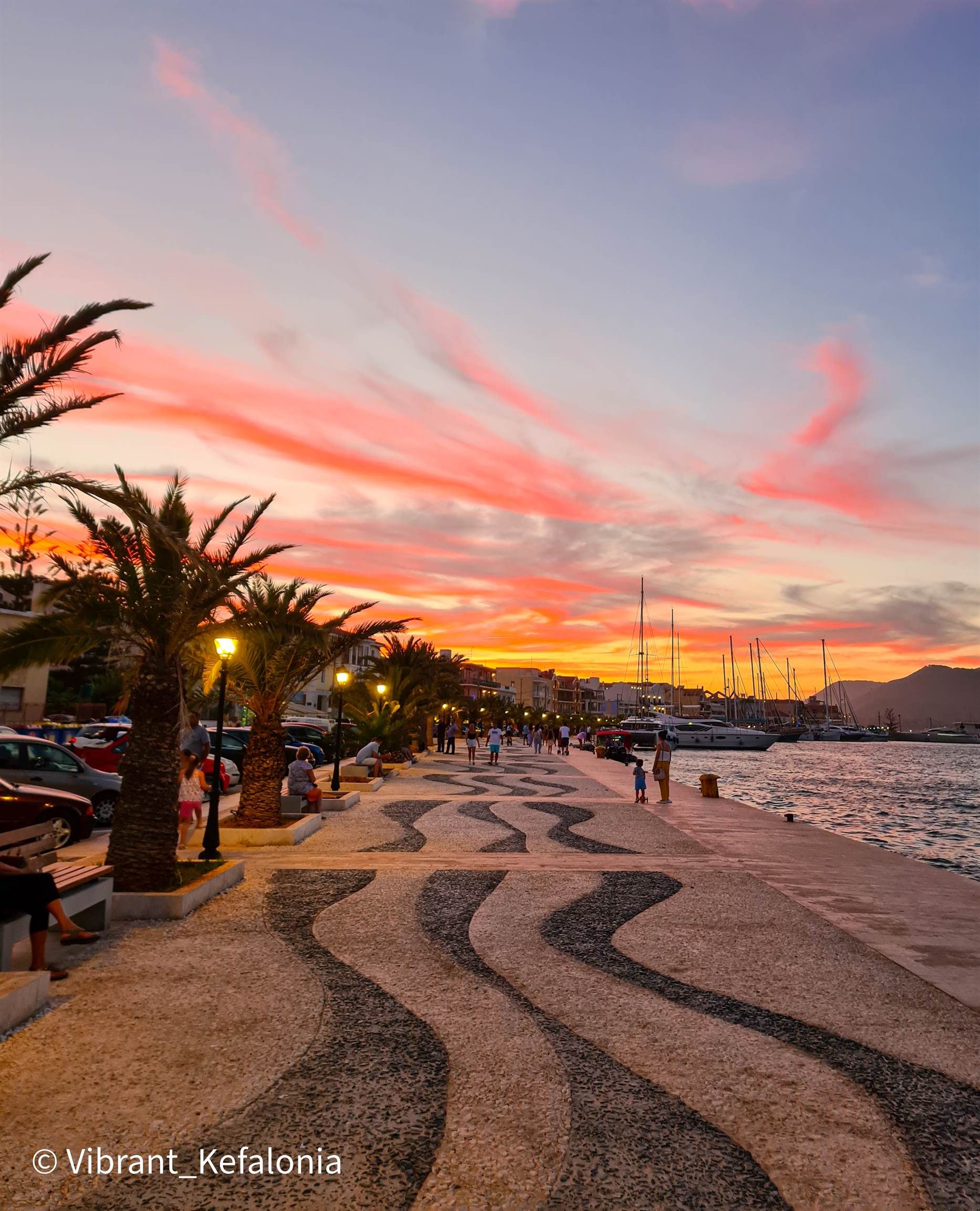
Port of Argostoli
For an extra adventure, take a walk to the pier for the ferries to Lixouri. It is only 15 minutes from the apartments.
Enrich your experience in Kefalonia with a scenic 25-minute ferry trip and explore the town of Lixouri. The frequency of the itineraries is every 30 minutes.
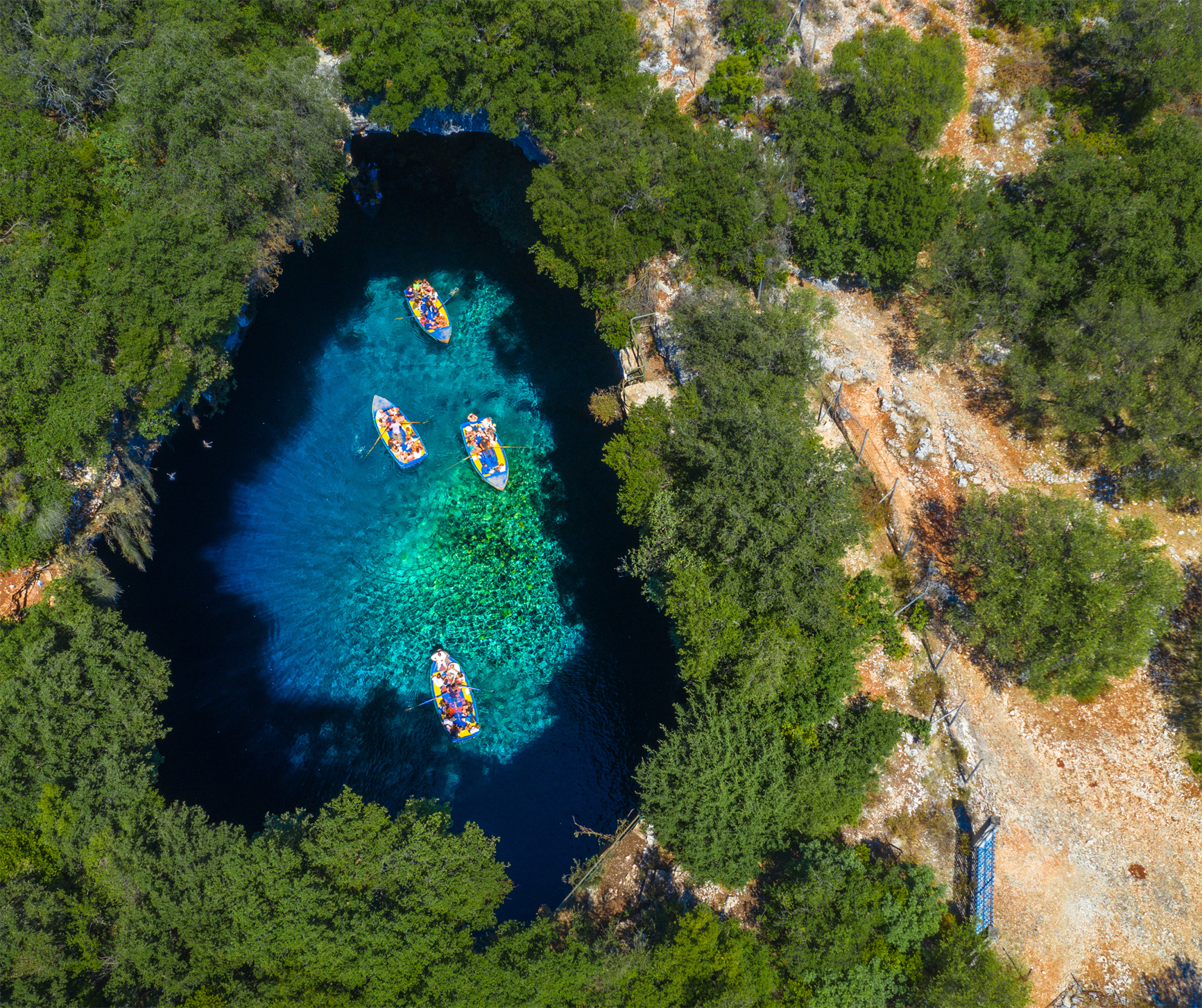
Melissani
The lake cave with the emerald waters.
The Melissani chasm lake cave is located on the south-eastern slope of Frydi hill, Sami. It is one of the most important caves in Greece as it is of particular geological, biological, archaeological, aesthetic and mythological interest. The name “Melissani” derives, according to the myth, from the nymph “Melissanthi” who committed suicide by falling into the waters of the cave, after the rejection of her love by the god Pan. The cult use of the cave in antiquity has been certified by excavations on the small island in the centre of the lake where findings of the 4th and 3rd centuries BC were found, certifying that the inhabitants of the area worshipped the goat god Pan and the Nymphs (the cave is also called the Cave of the Nymphs). The vaulted shape, the inaccessible character and the presence of the water element, combined with the vegetation as well as the complex geometric surfaces formed by stalactites, made the cave ideal as a place of worship.
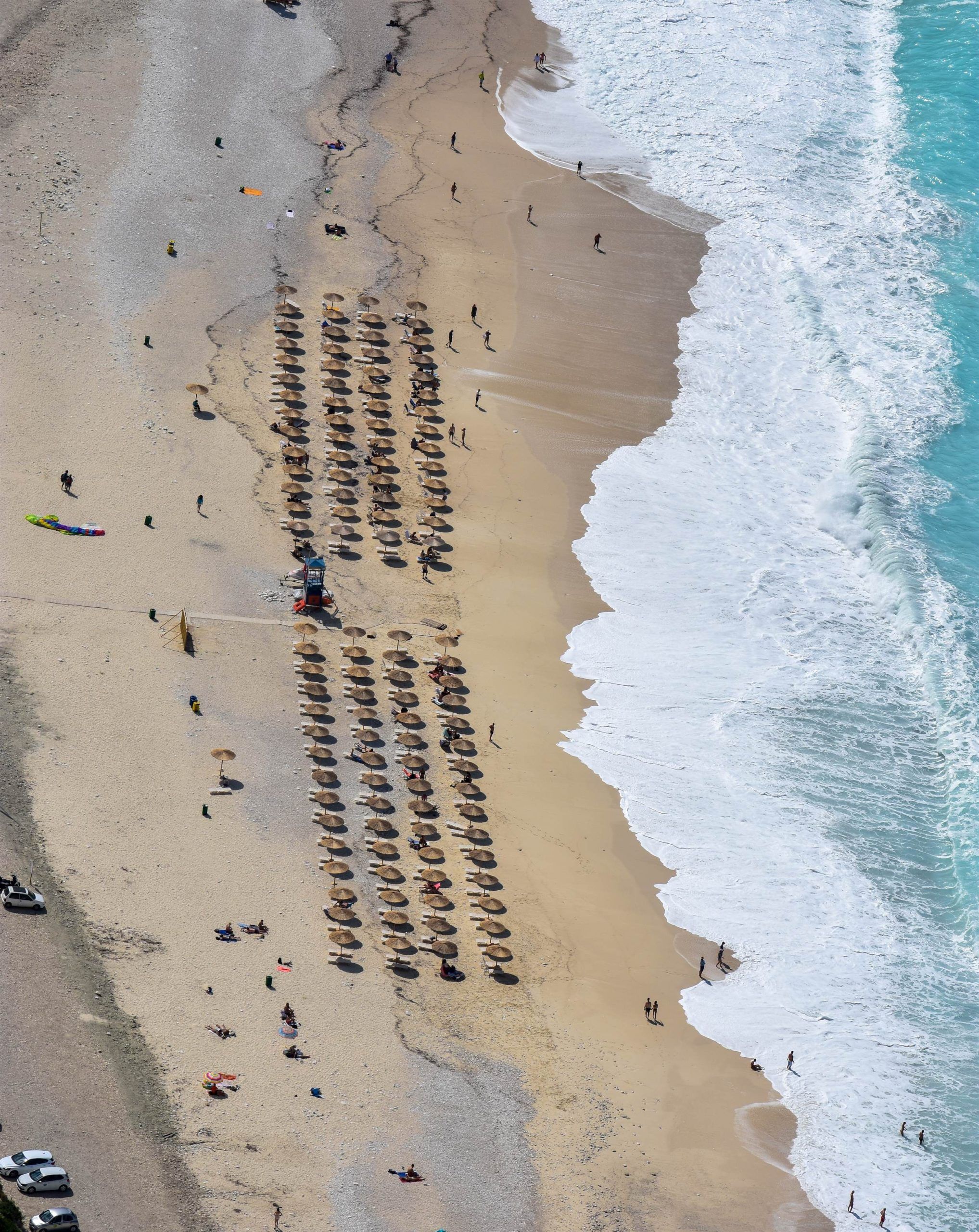
Myrtos
The beach of Myrtos is, undoubtedly, one of the main attractions in Kefalonia. It is located 29 km north of Argostoli, in a beautiful area around huge verdant hills.
Myrtos has gained worldwide fame and is constantly included in travel magazines among the most beautiful and impressive beaches in the world. It has been awarded many times for its cleanliness and natural beauty.
The natural beauty of Myrtos is the trademark of Kefalonia and one of the most photographed places in Greece.
The beach has a semicircular shape surrounded by impressive white rocky cliffs with lush vegetation on top creating an impressive scenery.
The green area, the steep terrain, the white pebbles and the crystal-clear waters compose a stunning scenery. The beach is well organized for the most part, with umbrellas and sunbeds while a small part remains completely virgin, ideal for complete isolation.
The west coast of Myrtos offers stunning sunset views.
Guests have direct access to a wide range of facilities and a nice snack bar offering cold drinks. Myrtos is easily accessible by all means of transport. Going down to the beach, you will enjoy stunning views from above.
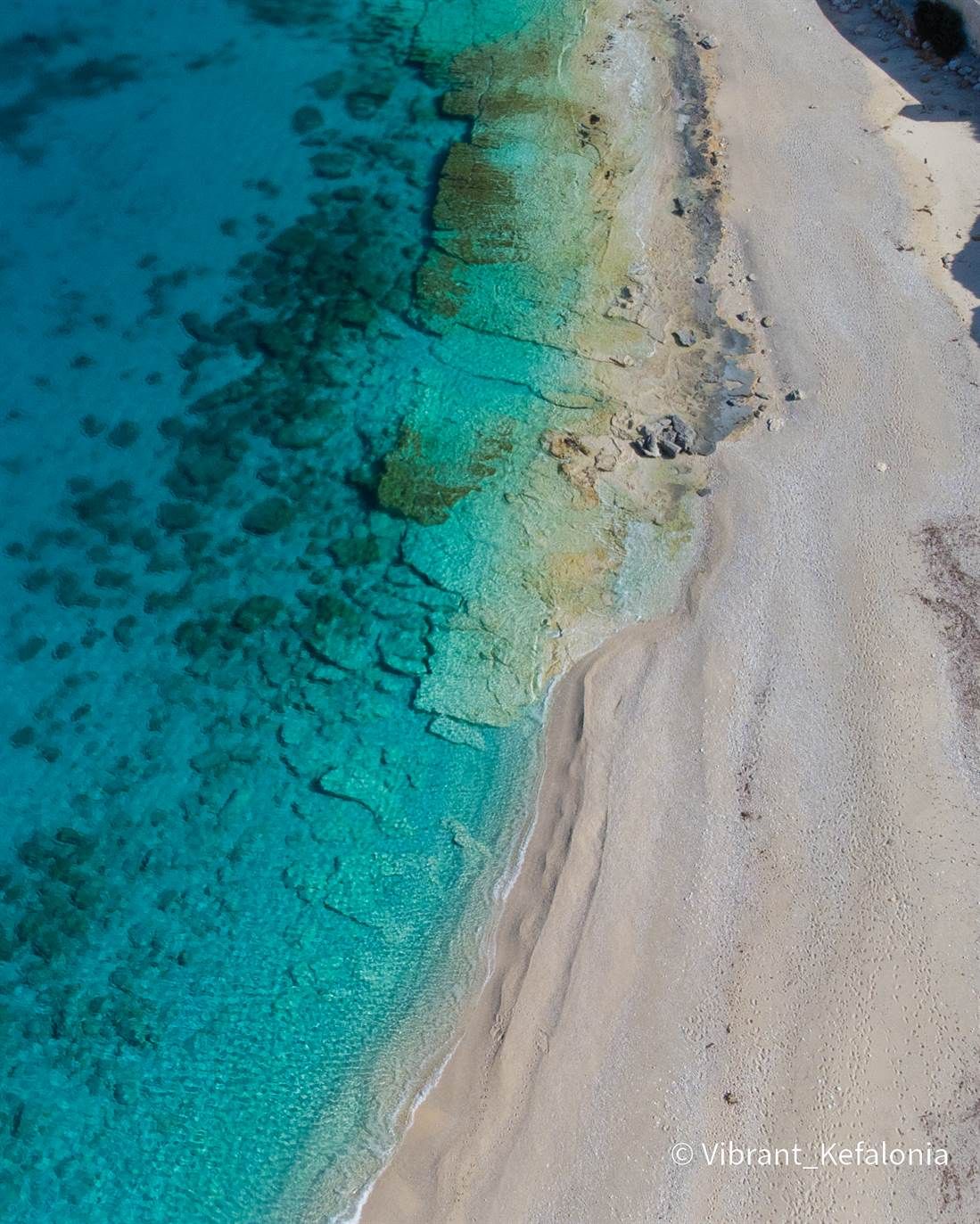
Petani
Petani is a magnificent beach of Kefalonia located on the beautiful peninsula of Paliki, near Lixouri.
It has of crystal-clear blue waters and a stunning landscape of huge green rocks that reach the blue of the sea.
The water deepens immediately and there are usually big waves in Petani. The beach is almost a kilometre long and is mostly covered with sand, but some pebbles are scattered along the coast. The beach is partially organized with umbrellas and sunbeds.
There is also a shower and toilet a few steps away. Near Petani visitors can find a few taverns and cafes. Parking is available but can only serve a few cars.
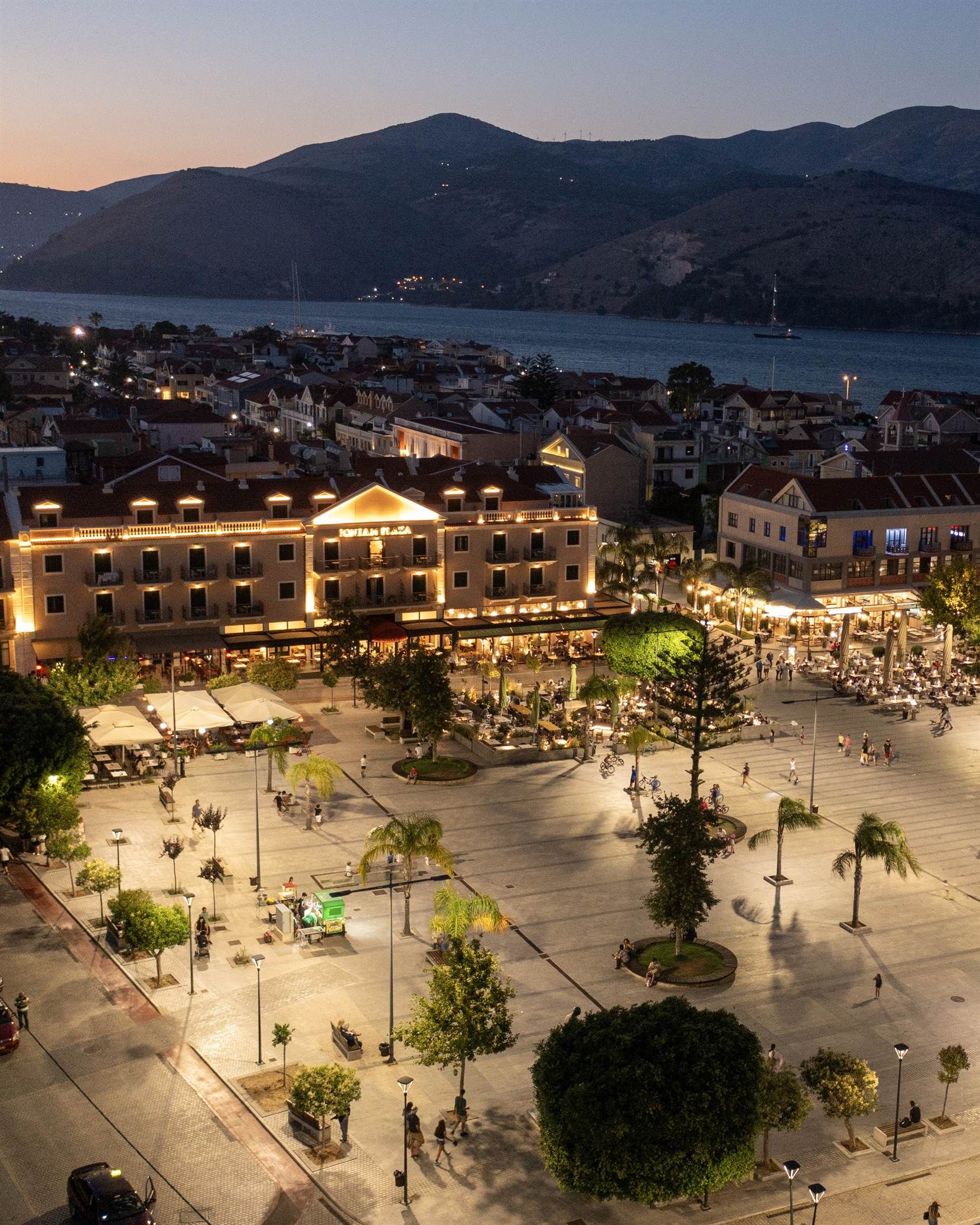
Vallianos Square
Vallianos Square in Argostoli is the ideal place to enjoy your coffee, refreshing drink or meal.
In the afternoons, the pedestrianized square becomes a meeting point for locals, tourists and children playing in a completely safe environment. The square was named after the Kefalonian and national benefactor Panagis Vallianos, whose statue stands in the square.
Throughout the summer, a variety of cultural activities, dance events and music concerts enliven the square in the evenings. An important part of the Kefalonian musical culture is the traditional serenades, played with guitar and mandolin.
Very close to the square, you can find the museums of the city, the shopping street Lithostroto, cafes and restaurants.
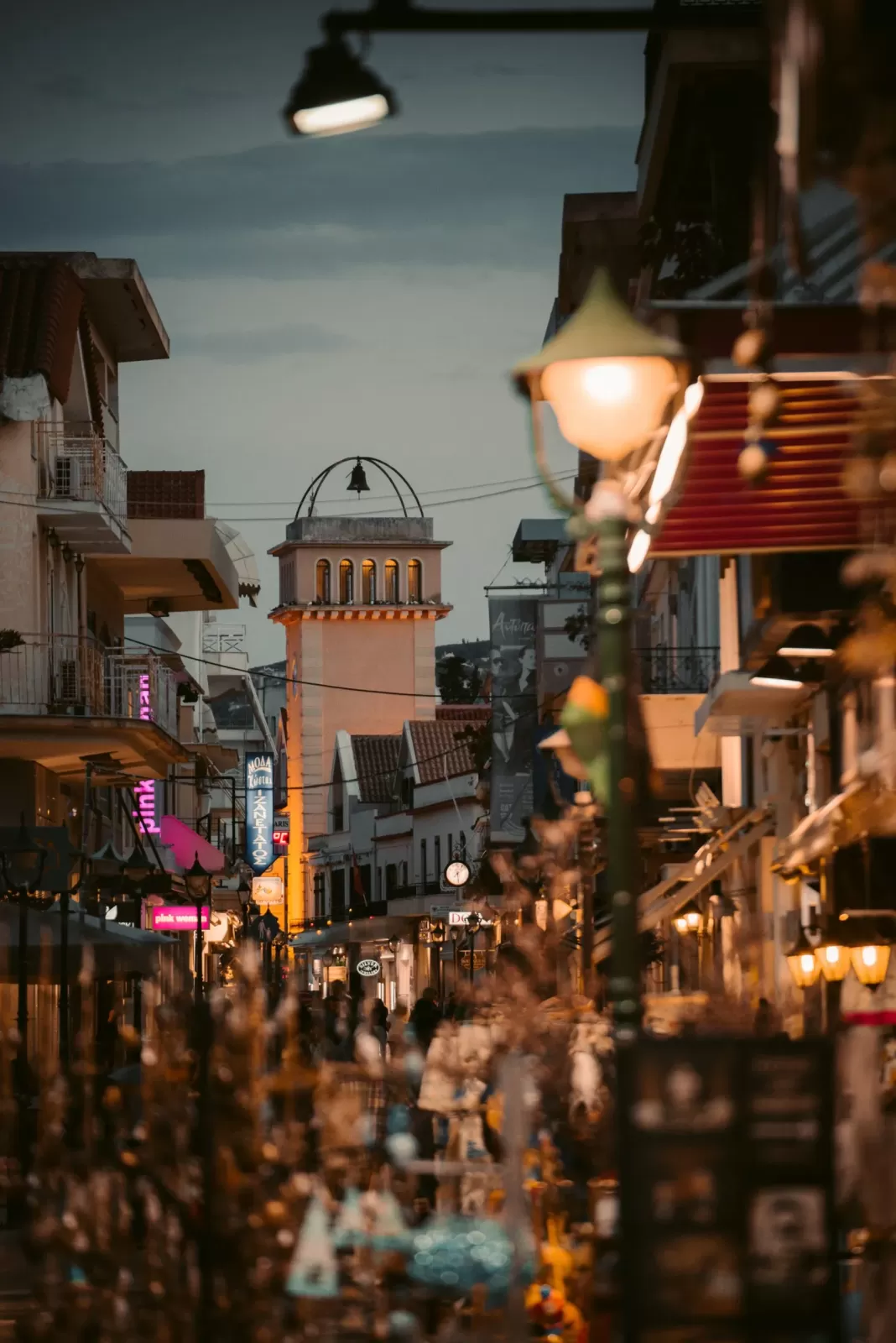
Kampana Square
Walking along the shops on the main shopping street of Argostoli, Lithostroto, you will reach Kampana Square.
It is obvious that the name of the square comes from the bell tower with the clock that adorns this square.
Today it is a nice atmospheric square with cafes and shops, but back in 1797 this historic and first town square was the central stage of one of the important historical events in the island’s turbulent history.
Here the French troops who entered Kefalonia, burned the Libro d’Oro (the “Golden Book” was the official list of nobles in the Republic of Venice to which the Ionian Islands belonged until then).
As a result of the French Revolution, in 1797 the Venetian rule in the Ionian Islands ended, when they were occupied by the democratic French forces.
In general, this change was welcomed with great joy, because it caused the end of the privileges of the aristocracy and the advent of equality for all citizens.
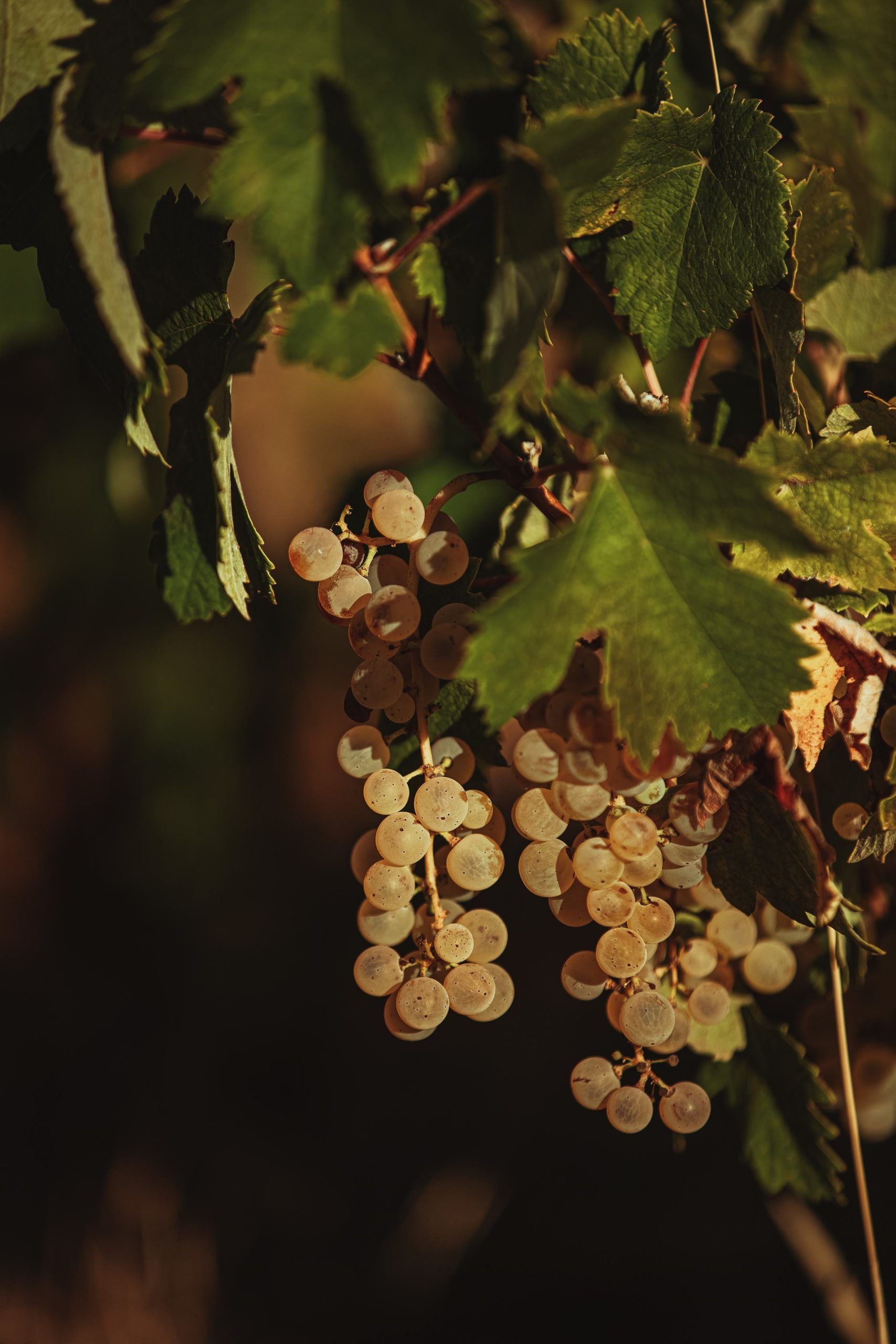
Robola
the grape that gives the famous Kefalonian wine on the slopes of Mount Ainos.
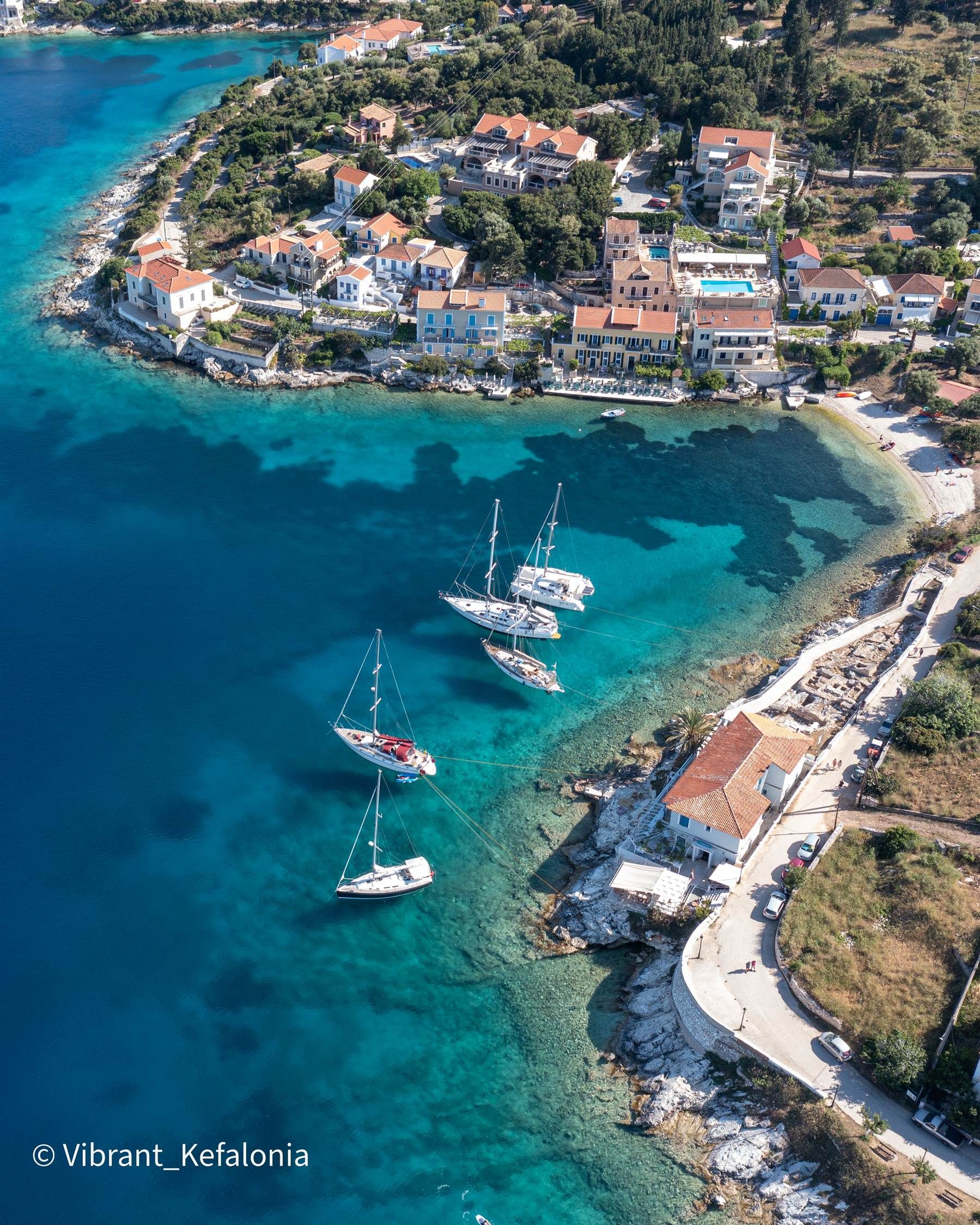
Fiskardo
The village of Fiskardo is located 49.5 km north of Argostoli, the capital of Kefalonia. Wrapped in hills covered with cypress and olive trees, this picturesque fishing village is so beautiful that it was added to Project Natura 2000 for its protection. It has its own harbour and marina that is considered a boatmen’s paradise and is densely filled with yachts in the summer.
Next to the port, plenty of taverns, bars and shops are waiting to welcome visitors.
Despite being a relatively cosmopolitan destination nowadays, Fiskardo has a few sites for history buffs, such as the Venetian Lighthouse and the Roman Cemetery.
Here lived Nikos Kavvadias, one of the greatest Greek writers.
Prehistoric tombs testify that the village has been inhabited for the last 40,000 years.
Formerly called Panormos, it was a well-known port during the Roman period.
Although the great earthquakes of 1953 caused extensive damage to the Ionian islands, Fiskardo somehow managed to remain untouched, resulting in the picturesque traditional Ionian architecture adorning the alleys to this day.
